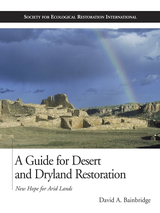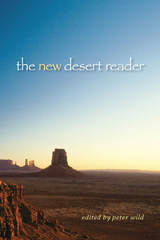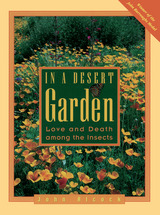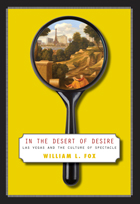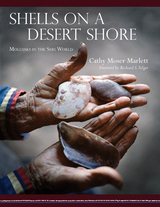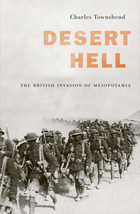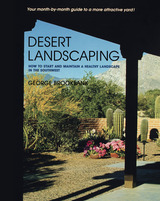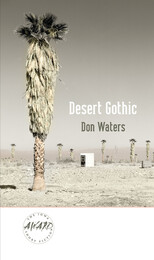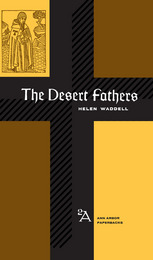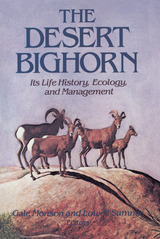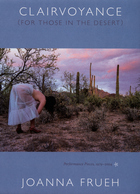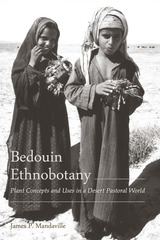DesertsCollection by Cassandra Verhaegen (12 items)These books are anything but dry. Includes the following tags:
Alcock, John, Arabian Peninsula, Arid regions, Arts, Behavior, Bighorn sheep, Campaigns, Classification, Conceptual, Desert, Desert ecology, Desert Fathers, Desert gardening, Desert plants, Deserts, Desire, Environmental Science, Ethnobotany, Ethnozoology, Fiction, Gardening, Glossaries, vocabularies, etc, History, Local, Hydrology, Individual Artists, Insects, Landscape gardening, Mammals, Management, Monson, Gale, Name, Nevada, Performance art, Restoration ecology, Short Stories (single author), Sonoran Desert, Southwest, Southwest, New, Texts, Uses, Waters, Don, Wild, Peter, Wildlife management
See More
|
A Guide for Desert and Dryland Restoration
by David A. Bainbridge
Island Press, 2007
Dryland degradation and desertification now affect almost a billion people around the world. Tragically, the biological resources and productivity of millions of acres of land are lost to desertification each year because people remain unaware of strategies and techniques that could improve yields, reduce risk, and begin healing the world's deserts. A Guide for Desert and Dryland Restoration is the first book to offer practical, field-tested solutions to this critical problem. Author David Bainbridge has spent more than 25 years actively involved in restoring lands across the American Southwest. A Guide for Desert and Dryland Restoration presents the results of his years of fieldwork, as well as research and experience from scientists and practitioners around the globe. The book discusses the ecology of desert plants, explores the causes of desertification and land abuse, and outlines the processes and procedures needed to evaluate, plan, implement, and monitor desert restoration projects. It sets forth economical and practical field-tested solutions for understanding site characteristics, selecting and growing plants, and ensuring that they survive with a minimal amount of water and care. Each chapter represents a guide to a critical topic for environmental restoration; extensive photographs, diagrams and drawings give detailed information for immediate application, and additional resources are included in appendixes. A Guide for Desert and Dryland Restoration is the first comprehensive book focused on restoring arid regions, and clearly demonstrates that arid lands can be successfully rehabilitated. In addition to restorationists, the book will be an invaluable resource for anyone working in arid lands, including farmers, ranchers, gardeners, landscapers, outdoor recreation professionals, and activists.
1
|
The New Desert Reader
edited by Peter Wild
University of Utah Press, 2006
The New Desert Reader brings together a historical cross section of writing about the American Southwest in selections that demonstrate how thinking about American deserts has changed from the earliest times to the present day. Beginning with the centuries-old legends of the Tohono O’Odham Indians, it moves through the foresighted observations of John Wesley Powell, one-armed explorer of the Grand Canyon; continues with the delicate appreciations of Mary Austin and Joseph Wood Krutch; includes examples of the keen activist writings of Wallace Stegner and Edward Abbey; and finishes with such contemporary desert writers as Tony Hillerman and others. A slow change in outlook dominates the book, as attitudes shift from viewing the desert as a place to be despised or exploited to an appreciation of it as a special place, an arena of highly complex natural communities, and a wild refuge for the human body and soul. Comprehensive and brightly informative, The New Desert Reader will be invaluable to anyone interested in the history, literature, and beauty of North America’s treasured desert places.
2
|
In a Desert Garden
by John Alcock
University of Arizona Press, 1999
When John Alcock replaced the Bermuda grass in his suburban Arizona lawn with gravel, cacti, and fairy dusters, he was doing more than creating desert landscaping. He seeded his property with flowers to entice certain insects and even added a few cowpies to attract termites, creating a personal laboratory for ecological studies. His observations of life in his own front yard provided him with the fieldnotes for this unusual book. In a Desert Garden draws readers into the strange and fascinating world of plants and animals native to Arizona's Sonoran Desert.
As Alcock studies the plants in his yard, he shares thoughts on planting, weeding, and pruning that any gardener will appreciate. And when commenting on the mating rituals of spiders and beetles or marveling at the camouflage of grasshoppers and caterpillars, he uses humor and insight to detail the lives of the insects that live in his patch of desert. Celebrating the virtues of even aphids and mosquitoes, Alcock draws the reader into the intricacies of desert life to reveal the complex interactions found in this unique ecosystem. In a Desert Garden combines meticulous science with contemplations of nature and reminds us that a world of wonder lies just outside our own doors.
3
|
In the Desert of Desire
by William L. Fox
University of Nevada Press, 2007
Las Vegas, says William Fox, is a pay-as-you-play paradise that succeeds in satisfying our fantasies of wealth and the excesses of pleasure and consumption that go with it. In this context, Fox examines how Las Vegas’s culture of spectacle has obscured the boundaries between high art and entertainment extravaganza, nature and fantasy, for-profit and nonprofit enterprises. His purview ranges from casino art galleries—including Steve Wynn’s private collection and a branch of the famed Guggenheim Museum—to the underfunded Las Vegas Art Museum; from spectacular casino animal collections like those of magicians Siegfried and Roy and Mandalay Bay’s Shark Reef exhibit to the city’s lack of support for a viable public zoo; from the environmental and psychological impact of lavish water displays in the arid desert to the artistic ambiguities intrinsic to Las Vegas’s floating world of showgirls, lapdancers, and ballet divas. That Las Vegas represents one of the world’s most opulent displays of private material wealth in all its forms, while providing miserly funding for local public amenities like museums and zoos, is no accident, Fox maintains. Nor is it unintentional that the city’s most important collections of art and exotic fauna are presented in the context of casino entertainment, part of the feast of sensation and excitement that seduces millions of visitors each year. Instead, this phenomenon shows how our insatiable modern appetite for extravagance and spectacle has diminished the power of unembellished nature and the arts to teach and inspire us, and demonstrates the way our society privileges private benefit over public good. Given that Las Vegas has been a harbinger of national cultural trends, Fox’s commentary offers prescient insight into the increasing commercialization of nature and culture across America.
4
|
Shells on a Desert Shore
by Cathy Moser Marlett
foreword by Richard Stephen Felger University of Arizona Press, 2014
In Mexico’s western Sonoran Desert along the Gulf of California is a place made extraordinary by the desert solitude, the dynamic sea, and the people who live there—the Seris. Central to the lives of these people are the sea and its shores.
Shells on a Desert Shore describes the Seri knowledge of mollusks and includes names, folklore, history, uses, and much more. Cathy Moser Marlett’s research of several decades, conducted in the Seri language, builds on work begun in 1951 by her parents, Edward and Becky Moser. The language, spoken by fewer than a thousand people today, is considered endangered. Marlett presents what she has learned from Seri consultants over recent decades and also draws from her own childhood experiences while living in a Seri village. The information from the people who had lived as hunter-gatherers provides a window into a lifestyle no longer recalled from personal experience by most Seris today—and perhaps a window into the lives of other peoples who made the Gulf’s shores their home. The book offers a wealth of information about Seri history, as well as species accounts of more than 150 mollusks from the Seri area on the central Gulf coast. Chapters describe how the people ate mollusks or used them medicinally, how the mollusks were named, and how their shells were used. The author provides several hundred detailed drawings and photographs, many of them archival. Shells on a Desert Shore is a fresh, original presentation of a significant part of the Seri way of life. Unique because it is written from the perspective of a participant in the Seri culture, the book will stand as a definitive, irreplaceable work in ethnography, a time capsule of the Seri people and their connection to the sea.
5
|
Desert Hell
by Charles Townshend
Harvard University Press, 2011
The U.S.-led conquest and occupation of Iraq have kept that troubled country in international headlines since 2003. For America’s major Coalition ally, Great Britain, however, this latest incursion into the region played out against the dramatic backdrop of imperial history: Britain’s fateful invasion of Mesopotamia in 1914 and the creation of a new nation from the shards of war.
6
|
Desert Landscaping
by George Brookbank
University of Arizona Press, 1992
George Brookbank has distilled nearly twenty years' experience—as an extension agent in urban horticulture with the University of Arizona—into a practical book that tells how to avoid problems with desert landscaping before they occur and how to correct those that do. In the first part, "How to Start and Maintain a Desert Landscape," he provides 28 easy-to-use chapters that address concerns ranging from how to start a wildflower garden to how to cope with Texas root rot. In Part Two, "A Month-By-Month Maintenance Guide," he offers a handy almanac that tells what to do and what to watch out for each month of the year, with cross-references to the chapters in Part One. Homeowners who maintain their own landscape will find in this book ways to make the work more satisfying and productive, while those who hire landscape contractors can make sure the work is done effectively and economically. "You'll find all kinds of books on desert landscape design and materials, irrigation system and design, and landscape installation," says Brookbank. "So far as I know, however, this is the only book that tells you what to do with what you've got and how to keep it growing."
CONTENTS Part 1 - How to Start and Maintain a Desert Landscape 1. Desert Conditions: How They Are "Different" 2. Plants Are Like People: They're Not Alike 3. Use Arid-Land Plants to Save Water 4. How to Irrigate in the Desert 5. How to Design and Install a Drip Irrigation System 6. Soils and Their Improvement I: How to Plant in the Desert 7. Soils and Their Improvement II: How to Use Fertilizers 8. What to Do When Things Go Wrong: A Troubleshooter's Guide 9. How to Avoid—and Repair—Frost Damage 10. How to Control "Weeds" 11. Palo Verde Borer Beetle: What to Do 12. How to Avoid Texas Root Rot 13. When You Move Into an Empty House 14. What to Do About Roots in Drains 15. How to Dig Up Plants and Move Them 16. How to Have Flower Bed Color All Year 17. Landscape Gardening with Containers 18. Starting Wildflowers 19. Starting a Lawn 20. Making and Keeping a Good Hedge 21. Pruning Trees and Shrubs 22. Palm Tree Care 23. Caring for Saguaros, Ocotillos, Avages, and Prickly Pears 24. Roses in the Desert: Hard Work and Some Disappointments 25. Landscaping with Citrus 26. Swimming Pools: Plants, Play, and Water-Saving 27. Landscape Maintenance While You're Away 28. Condominiums: Common Grounds, Common Problems Part 2 - A Month-by-Month Maintenance Guide
7
|
Desert Gothic
by Don Waters
University of Iowa Press, 2007
This powerful debut collection, set in the light-filled deserts of Nevada and Arizona, introduces a darkly inventive new voice. Like an early Richard Ford, Don Waters writes with skill, empathy, and an edgy wit of worlds not often celebrated in contemporary literature. In Desert Gothic, Waters unleashes a wild and gritty cast and points them down paths of reckoning, where the characters earn the grace of their hard-won wisdom. Set in bars, mortuaries, nursing homes, truck stops, and the “poverty motels that encircled downtown’s casino corridor,” Waters’s ten stories are full of misfit transients like Julian, a crematorium worker who decorates abandoned urns to create a “lush underground island,” and the instant Mormon missionary Eli, a hapless divorcé who “always likes people better when they’re a little broken.” Limo drivers, ultra-marathoners, vagabonds, and a distraught novelist-to-be populate the pages of these gritty stories.
8
|
The Desert Fathers
by Helen Waddell
University of Michigan Press, 1956
The words of the 4th-century monastics who founded the Desert Rule
9
|
The Desert Bighorn
edited by Gale Monson and Lowell Sumner
University of Arizona Press, 1980
"A landmark, fundamental for all students in the field. . . . The material, in itself fascinating and lucidly presented, will draw the reader through and increase his understanding of the bighorn at just about every turn of the page." —Orion Nature Book Review
"An intelligently researched and fully documented analysis of this noble rock-climber's life history, and ecology, and the human management of this nearly impossible-to-manage wilderness species." —American Field "An outstanding and comprehensive work." —Books of the Southwest "There is quite simply nothing else around that can tell you anywhere near as much about desert sheep, by anywhere near so distinguished a crew of authors." —Safari
10
|
Clairvoyance (For Those In The Desert)
by Joanna Frueh
Duke University Press, 2008
The performance artist Joanna Frueh has emerged over the past twenty-five years as a wildly original voice in feminist art. Her uninhibited performances are celebrations of beauty, sensuality, eroticism, and pleasure. Clairvoyance (For Those In The Desert), which features eighteen of her essential performance texts, is a celebration of this remarkable artist and her work. Arranged chronologically, from The Concupiscent Critic (1979) through Ambrosia (2004), the pieces reveal Frueh’s evolution as an artist and intellectual over the course of her career. Many of these texts have never before been published; others have not been readily available until now. Among the sixteen color photographs in this richly illustrated book are pictures of Frueh performing and images from Joanna in the Desert, a 2006 collaboration between Frueh and the artist and scholar Jill O’Bryan. Frueh’s performances are unabashedly autobiographical, as likely to reflect her scholarship as a feminist art historian as her love affairs or childhood memories. For Frueh, eros and self-love are part of a revolutionary feminist strategy; her work exemplifies the physicality and embrace of pleasure that she finds wanting in contemporary feminist theory. Scholarly and rigorous yet playful in tone, her performances are joyful, filled with eroticism, flowers, sexy costumes, and beautiful colors, textures, and scents. Recurring themes include Frueh’s passionate attachment to the desert landscape and the idea of transformation: a continual reaching for clarity of thought and feeling.
11
|
Bedouin Ethnobotany
by James P. Mandaville
University of Arizona Press, 2011
A Bedouin asking a fellow tribesman about grazing conditions in other parts of the country says first simply, “Fih hayah?” or “Is there life?” A desert Arab’s knowledge of the sparse vegetation is tied directly to his life and livelihood.
Bedouin Ethnobotany offers the first detailed study of plant uses among the Najdi Arabic–speaking tribal peoples of eastern Saudi Arabia. It also makes a major contribution to the larger project of ethnobotany by describing aspects of a nomadic peoples’ conceptual relationships with the plants of their homeland. The modern theoretical basis for studies of the folk classification and nomenclature of plants was developed from accounts of peoples who were small-scale agriculturists and, to a lesser extent, hunter-gatherers. This book fills a major gap by extending such study into the world of the nomadic pastoralist and exploring the extent to which these patterns are valid for another major subsistence type. James P. Mandaville, an Arabic speaker who lived in Saudi Arabia for many years, focuses first on the role of plants in Bedouin life, explaining their uses for livestock forage, firewood, medicinals, food, and dyestuffs, and examining other practical purposes. He then explicates the conceptual and linguistic aspects of his subject, applying the theory developed by Brent Berlin and others to a previously unstudied population. Mandaville also looks at the long history of Bedouin plant nomenclature, finding that very little has changed among the names and classifications in nearly eleven centuries. An essential volume for anyone interested in the interaction between human culture and plant life, Bedouin Ethnobotany will stand as a definitive source for years to come.
12
|
| Click here to go to the beginning. | ||||||||||||
